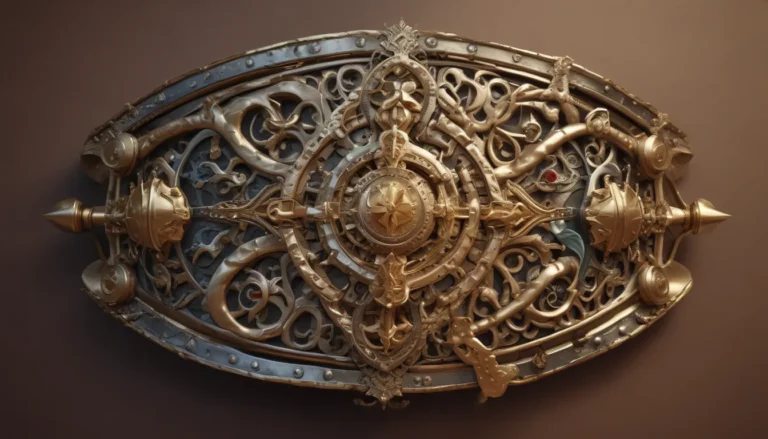The images in our articles may not match the content exactly. They are used to grab your attention, not to show the exact details in the text. The images complement the text but do not replace it.
The Moors, a diverse group of Muslim inhabitants of the Maghreb, Iberian Peninsula, Sicily, and Malta during the Middle Ages, have left an indelible mark on history. Their influence extended across various domains including art, architecture, science, and language. Exploring the legacy of the Moors offers a fascinating journey into the past, revealing a rich tapestry of accomplishments and cultural exchanges.
Unveiling the Diverse Identity of the Moors
The term “The Moors” referred to the Muslim inhabitants of the Maghreb, the Iberian Peninsula, Sicily, and Malta during the Middle Ages. This diverse population encompassed various ethnic groups, including Berbers, Arabs, and Black Africans, who brought their unique cultures and traditions to the regions they inhabited.
The Golden Age of Islam: A Period of Remarkable Achievements
During the Islamic Golden Age, the Moors made remarkable contributions to fields such as mathematics, astronomy, medicine, and philosophy. Their advancements in these disciplines significantly influenced the development of knowledge and learning in medieval Europe.
Al-Andalus: A Flourishing Civilization of Innovation
In Al-Andalus, the Moors created a flourishing civilization characterized by stunning architecture, advanced irrigation systems, and vibrant cultural exchange. Cities such as Cordoba and Granada became renowned centers of learning, art, and innovation under Moorish rule.
Pioneers of Agricultural Advancements in Europe
The Moors introduced new agricultural techniques to Europe, including crop rotation and the cultivation of new crops like citrus fruits and rice. These practices revolutionized European agriculture and had a lasting impact on the continent’s economy.
Architectural Marvels: The Enduring Legacy of the Moors
The architectural marvels left behind by the Moors, including the Alhambra palace and the Great Mosque of Cordoba, showcase their mastery in design and construction. These structures stand as enduring testaments to the Moors’ influence on European architecture and design.
Transmission of Knowledge: Preserving the Past for the Future
During the Middle Ages, the Moors preserved and translated numerous classical Greek and Roman texts, safeguarding invaluable knowledge that would later be reintroduced to Europe. Their efforts in preserving these works significantly contributed to the intellectual revival of the continent.
Cultural Impact: Artisans and Craftsmen
Moorish artisans were renowned for their intricate tilework, exquisite metalwork, and vibrant textiles. Their craftsmanship displayed a remarkable attention to detail and a fusion of diverse artistic influences, leaving a profound impact on the decorative arts of the regions they inhabited.
Linguistic Legacy: Influencing the Spanish Language
The Moorish presence in the Iberian Peninsula left an indelible mark on the Spanish language, with many words of Arabic origin integrated into the vocabulary. This linguistic legacy serves as a testament to the enduring influence of the Moors on the cultural fabric of Spain.
Spirit of Tolerance: A Beacon of Coexistence
Under Moorish rule, Al-Andalus became a beacon of religious and cultural tolerance, where Muslims, Christians, and Jews coexisted and contributed to a rich tapestry of intellectual and artistic exchange. This spirit of pluralism and cooperation set a profound example for interfaith relations.
Advancements in Medicine and Healthcare
Moorish physicians and scholars made noteworthy advancements in medical knowledge, including the establishment of hospitals with specialized wards, the development of surgical techniques, and the compilation of comprehensive medical encyclopedias that became influential in the history of medicine.
Excellence in Astronomy and Mathematics
Moorish scholars made significant strides in astronomy and mathematics, making pioneering contributions in areas such as trigonometry, algebra, and celestial observations. Their discoveries and innovations played a pivotal role in shaping the scientific landscape of the era.
Geometric Patterns: A Visual Legacy
The Moors’ mastery of geometric patterns and intricate designs profoundly influenced the artistic traditions of Europe. Their geometric motifs and arabesque embellishments became hallmarks of Moorish artistic expression.
Navigators and Traders: Building Connections through Trade
With their expertise in navigation and seafaring, the Moors established extensive trade networks that connected the Mediterranean with regions across Africa and the Middle East. Their maritime activities facilitated the exchange of goods, ideas, and cultural influences.
Culinary Contributions: Enriching European Cuisine
The culinary heritage of the Moors left an indelible mark on European cuisine, as they introduced an array of exotic spices, fruits, and cooking methods. Their culinary innovations enriched the gastronomic traditions of the regions they inhabited.
Music and Poetry: A Cultural Tapestry
Moorish musicians and poets cultivated a rich tradition of music and poetry in Al-Andalus, blending diverse influences to create a vibrant artistic tapestry. Their lyrical compositions and melodic innovations became integral to the cultural landscape of the region.
Patronage of the Arts and Learning
Moorish rulers and nobility served as patrons of the arts, fostering an environment where scholars, artists, and intellectuals thrived. Their support for cultural endeavors contributed to the flourishing of artistic and scholarly pursuits in Moorish territories.
Engineering Marvels: Advanced Irrigation Systems
In regions under Moorish rule, the construction of advanced irrigation systems facilitated agricultural productivity and sustained thriving economies. Their expertise in water management and engineering significantly enhanced the agricultural landscape of the territories they governed.
Textile Traditions: Celebrating Craftsmanship
Moorish weavers and artisans were celebrated for their intricate textiles and luxurious carpets, characterized by elaborate patterns and vibrant colors. Their textile traditions became highly sought after and influenced the textile industry in Europe.
Gardens of Tranquility: A Horticultural Legacy
Moorish gardens, known for their lush greenery, ornate fountains, and serene courtyards, exemplified the Moors’ profound appreciation for horticulture and landscape design. These meticulously crafted gardens became enduring symbols of beauty and tranquility.
Timeless Inspiration: The Enduring Legacy of the Moors
The enduring legacy of the Moors continues to captivate scholars, artists, and enthusiasts, serving as a source of inspiration for diverse fields, including art, architecture, literature, and cultural studies. Their multifaceted contributions have left an indelible mark on the tapestry of human history.
Conclusion: A Lasting Impact
The Moors left an indelible mark on history, influencing art, architecture, science, and culture in profound ways. Their impact on the Iberian Peninsula and beyond is a testament to their remarkable legacy. Through their advancements in various fields and their rich cultural contributions, the Moors shaped the course of history and left a lasting imprint that continues to be celebrated and studied to this day.
FAQs
What were the major achievements of the Moors?
The Moors made significant advancements in fields such as mathematics, astronomy, medicine, and architecture. Their contributions include the development of algebra, the introduction of innovative irrigation techniques, and the construction of breathtaking architectural marvels such as the Alhambra.
How did the Moors influence European culture?
The Moors had a profound impact on European culture, introducing new agricultural practices, scientific knowledge, and architectural styles. Their influence can be seen in the language, cuisine, and artistic traditions of regions where their presence was felt.
As you explore the remarkable legacy of the Moors through these 20 amazing facts, you gain a deeper appreciation for their rich and multifaceted contributions to history. The Moors’ enduring impact continues to inspire and captivate individuals across the globe, serving as a testament to their remarkable achievements and lasting influence on human civilization.






